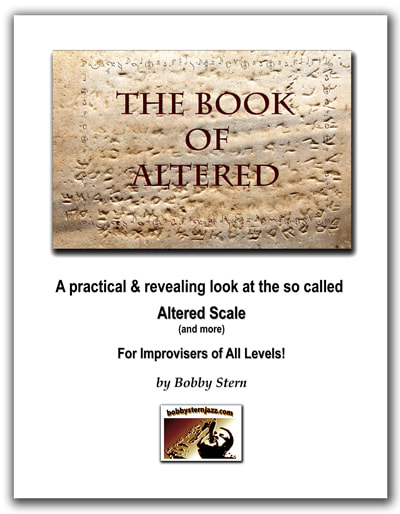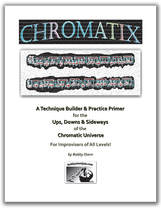
One of the techniques often cited, when dealing with the ubiquitous ii-V7-I chord progression, is transposing a phrase from the ii chord up a minor 3rd to the V7.
This is sometimes referred to as the ACE method, which defines the ii and V7 chords in terms of their Melodic Minor "keys" and can resolve either to a third Melodic Minor tonic (i) chord, or to Major, as it does in our case here.
The material used for both the ii and V7 in this example comes exclusively from their respective Melodic Minor scale systems. For D-7b5 - it's F Melodic Minor (F-G-Ab-Bb-C-D-E), and for G7alt it's Ab Melodic Minor (Ab-Bb-B-Db-Eb-F-G). Both of these Melodic Minor systems contain the forementioned alterations and replace the Dorian and Mixolydian modes associated with the basic diatonic ii-V7.
D-7b5 is built in 3rds from from the 6th scale step of F Melodic Minor, while G7alt is likewise constructed from the 7th scale step of Ab Melodic Minor, and is commonly referred to as the "altered scale" as it contains each of the 4 altered tensions - namely the flat-5, flat-9, sharp-9 & flat-13 (shown in red the previous paragraph), as well as the Root, 3rd & flat-7, and contains no natural 5th.
The melodic shape and note choices in bar #3 to the first half of bar #4, are virtually identical to those in bars #1 and #2, transposed up a minor 3rd. At the same time, the harmonic root movent is in fourths (ii-V7-I).
The line anticipates the V7-I resolution via the 9th of C Maj7 on the final eighth-note of bar #4, and continues with Major scale material until the last, where a quick b13 is featured in the final V7-I resolution, coming to rest on the 7th of C Maj7.
Download the Free-B pdf to experience this eight-bar sequence in all 12 keys.
B. Stern
*** "The SUPER 4" - A 4-Note Swiss Army Knife for Improvisers ***
*** A Cool Tonic for Your PentaUp b6 ***
*** Shortbook™ of the Month:The Book of Altered ***





 RSS Feed
RSS Feed









